Differences in Lifetime Use of Services for Mental Health Problems in Six European Countries
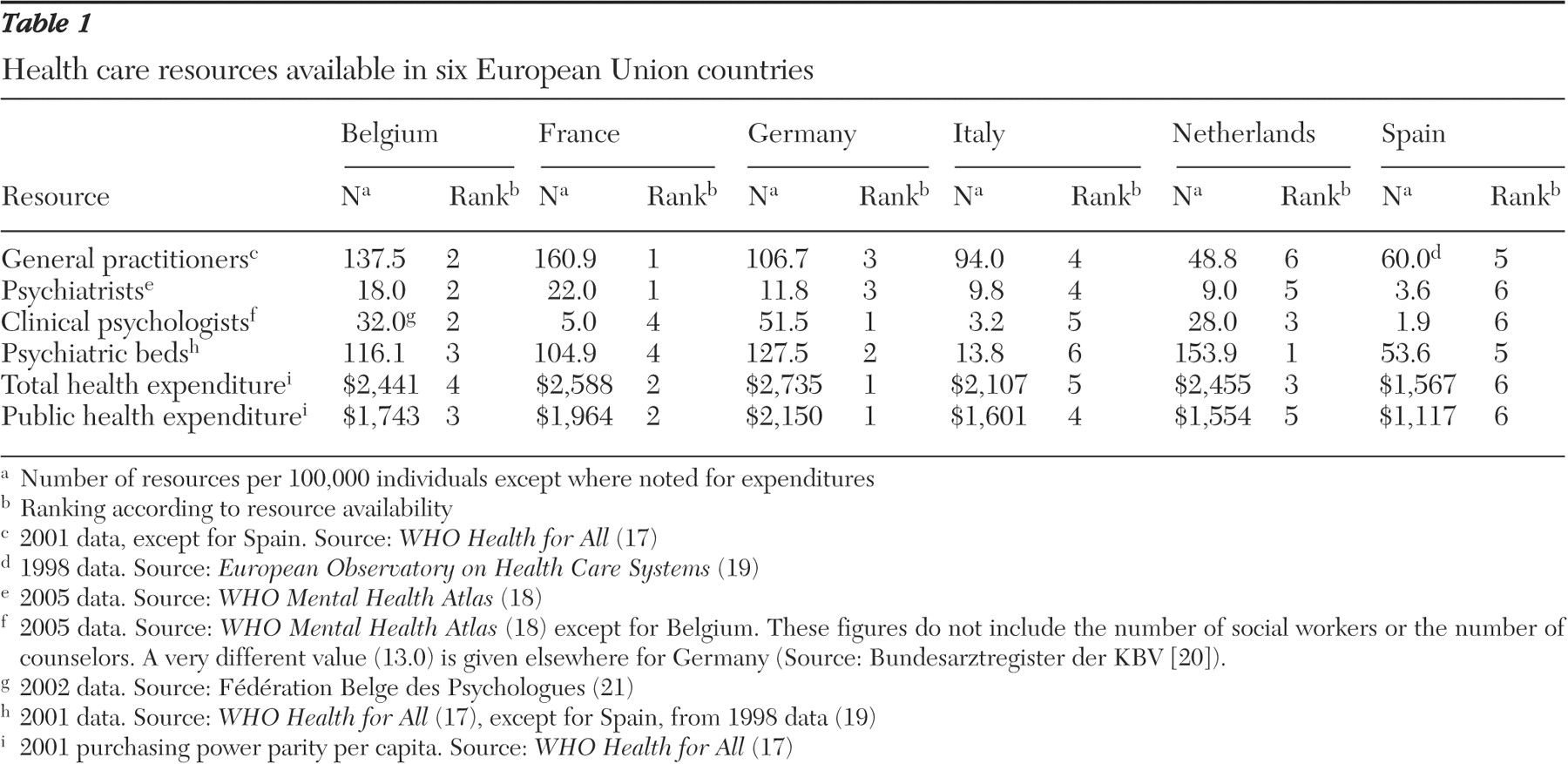
Methods
Mental disorders
Service use
Statistical analysis
Results
Sample
Lifetime consultation rates for mental health problems
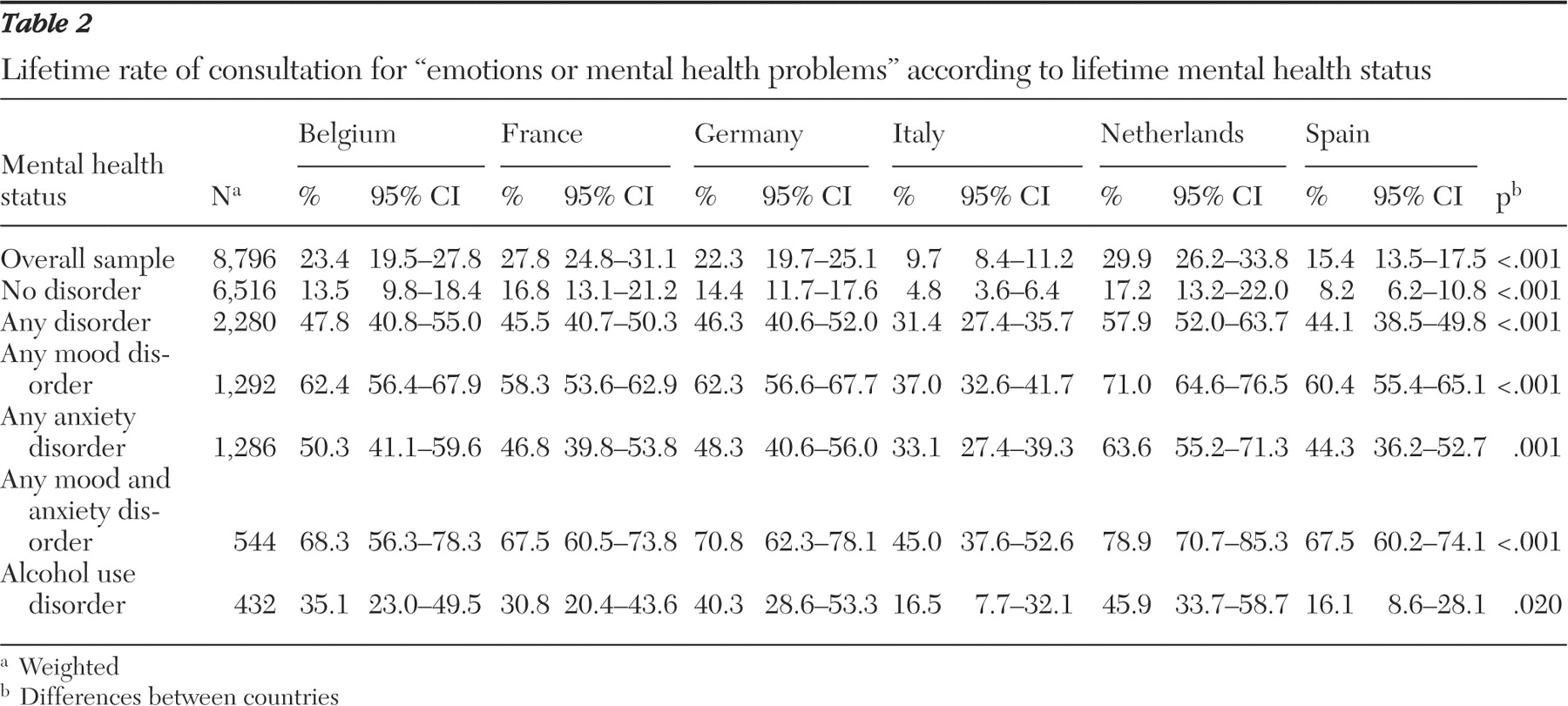
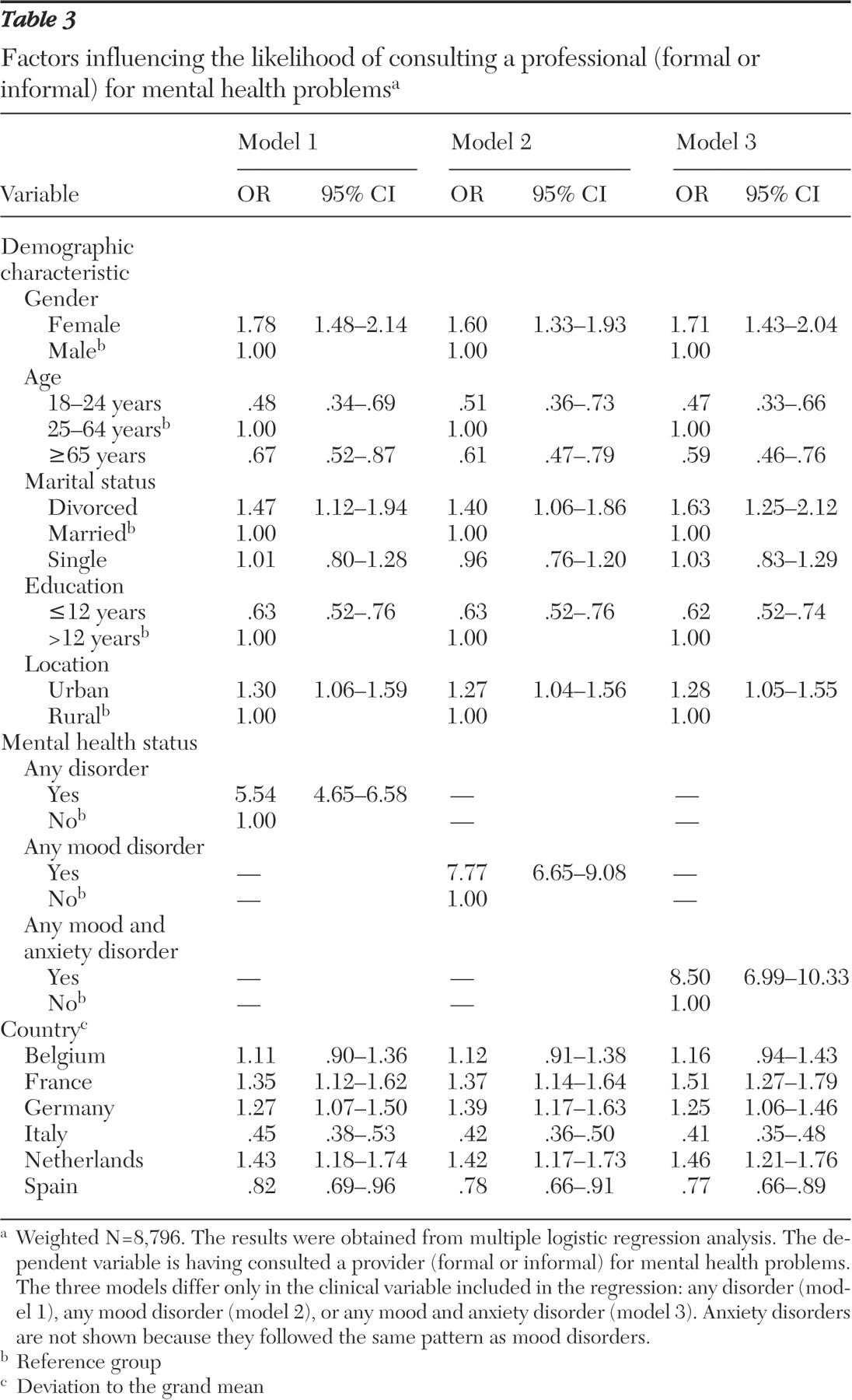
Type of provider consulted
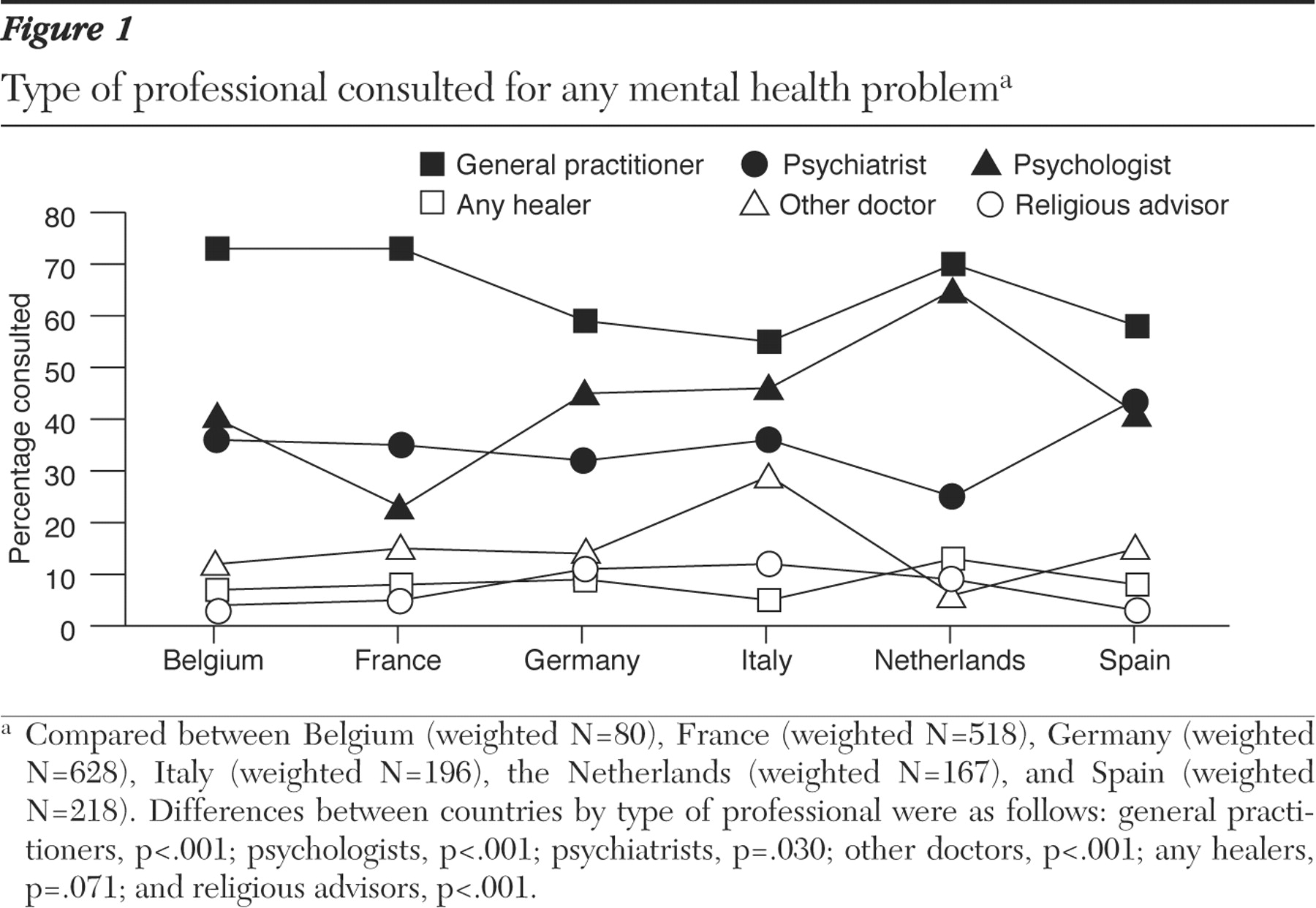
Use of a mental health professional versus a general practitioner
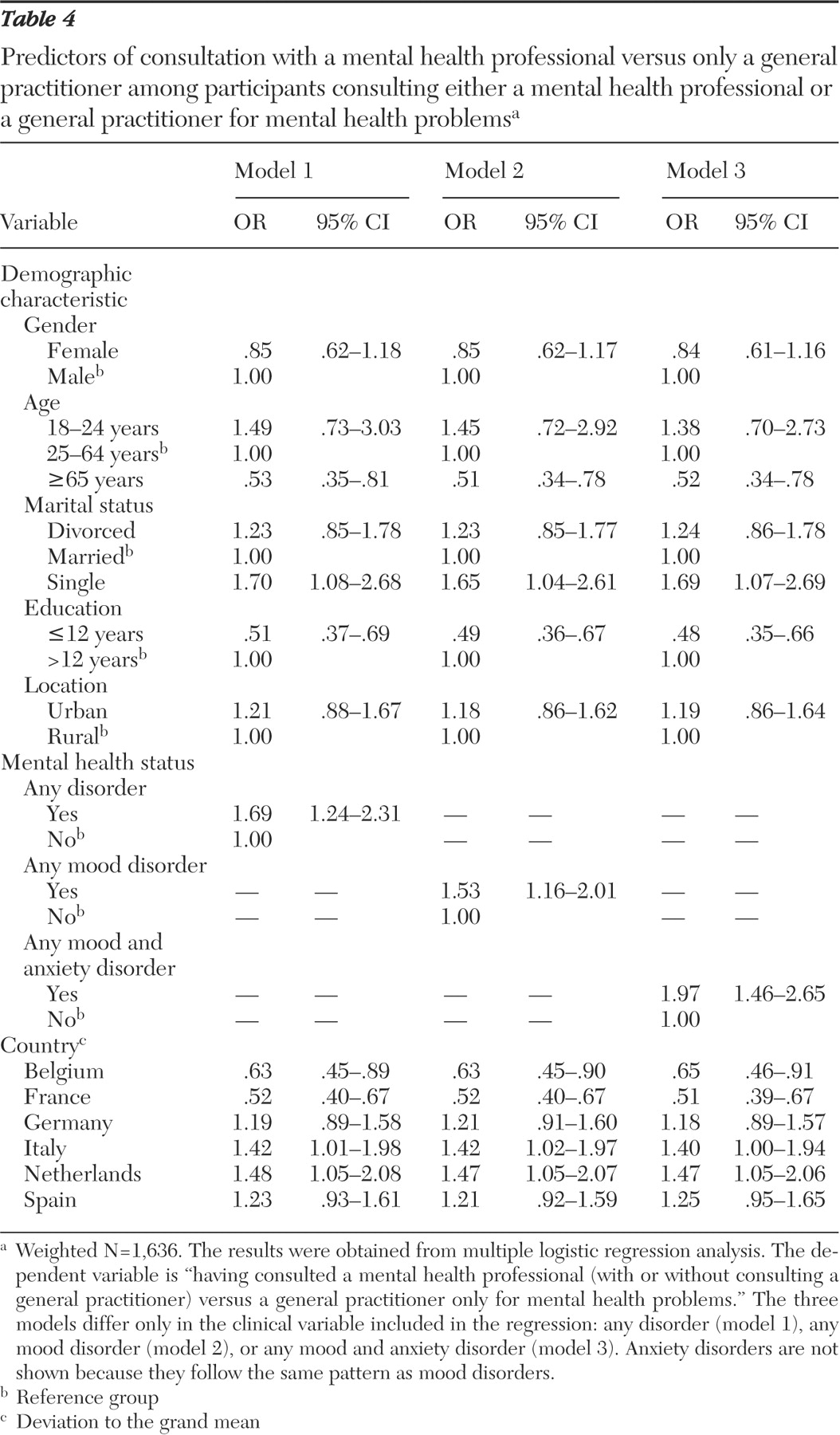
General practitioner referral to mental health professionals
Discussion
Comparisons with previous studies
Comparing resources and use of care
Limitations and strengths of the study
Conclusions
Acknowledgments and disclosures
Footnote
References
Information & Authors
Information
Published In
History
Authors
Metrics & Citations
Metrics
Citations
Export Citations
If you have the appropriate software installed, you can download article citation data to the citation manager of your choice. Simply select your manager software from the list below and click Download.
For more information or tips please see 'Downloading to a citation manager' in the Help menu.
View Options
View options
PDF/EPUB
View PDF/EPUBGet Access
Login options
Already a subscriber? Access your subscription through your login credentials or your institution for full access to this article.
Personal login Institutional Login Open Athens loginNot a subscriber?
PsychiatryOnline subscription options offer access to the DSM-5-TR® library, books, journals, CME, and patient resources. This all-in-one virtual library provides psychiatrists and mental health professionals with key resources for diagnosis, treatment, research, and professional development.
Need more help? PsychiatryOnline Customer Service may be reached by emailing [email protected] or by calling 800-368-5777 (in the U.S.) or 703-907-7322 (outside the U.S.).

